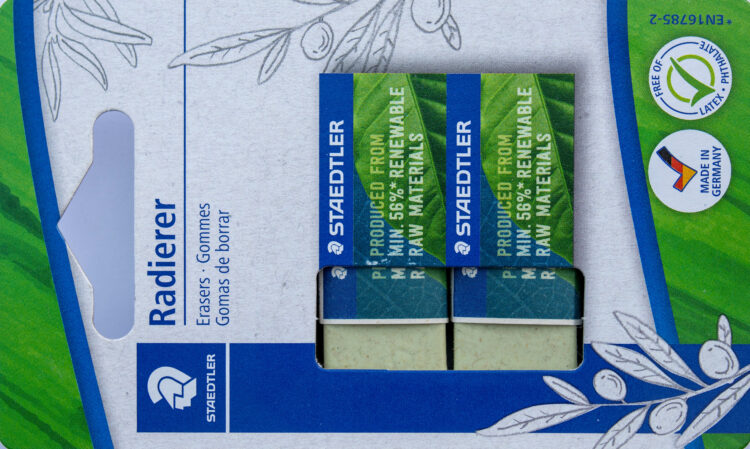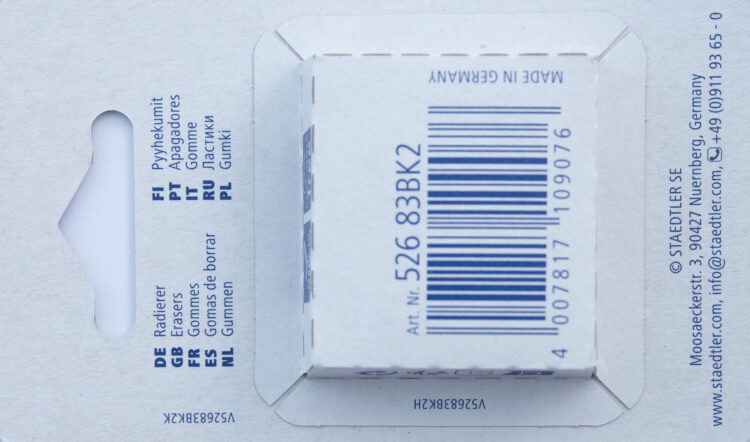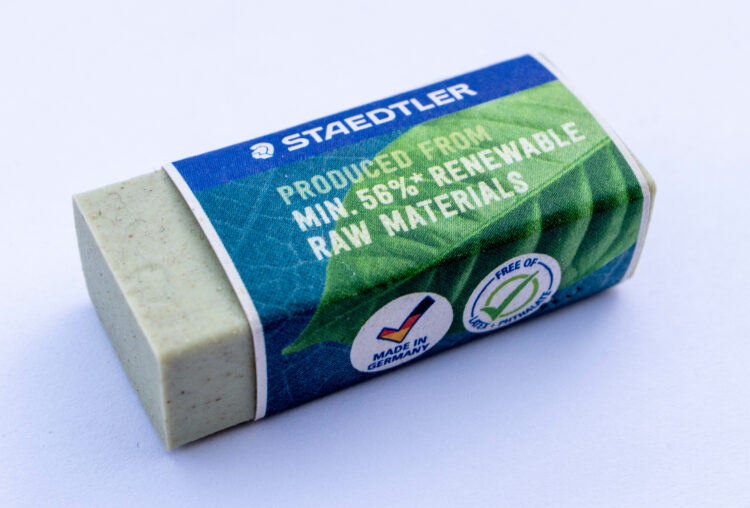
Today: a look at a new eraser from Staedtler. I bought this eraser in August at Kaufland, a German supermarket-chain that is part of the same group as Lidl, on offer for €1.09 (~£0.92; $1.16). The normal price seems to be €2.20 (~£1.85; $2.33).

The packaging advertises it as being made with a minimum of 56% renewable materials. This made me curious to find out more. Luckily Mr. Rüdel from Staedtler was able to provide some more details: the chalk that is typically used when producing this type of eraser has been replaced by olive pomace, i.e. the solid remains of the olives after pressing for olive oil. The eraser has been available since Autumn 2023.

According to the official web page for this eraser, the plant flour that replaces the chalk can also come from corn. Additionally, the sleeve paper is made from by-products of sugar cane harvest..

This all sounds great, but the question now is whether the eraser performs well at erasing.
Luckily the 526 83-5 (that’s the official article number) doesn’t disappoint. Its performance is comparable to the well-known Mars plastic eraser, also by Staedtler.

My favourite erasers are still dust-free ones, but this is a nice performer with the added bonus of being made from renewable materials.
Price: August 2024
Exchange rates: October 2024
I remember being all against selling trash to people as a way to greenwash company image but if the final product is not worse than the “original”, that sounds great.
That’s an interesting eraser. Glad to see it performs well and doesn’t sacrifice utility for being eco-friendly. I’m also glad to see it doesn’t come in that tiny, fiddly plastic sleeve the Mars Plastic comes in – always a pain to get it off!
I wonder if the colour is a natural part of the process or has been ‘enhanced’ a little? A couple of years ago, I spoke for a while with someone who’d worked at the last local paper mill until it closed. He told me that recycled paper often comes out nearly as white as new paper and is largely dependent on the feedstock used. Some customers wanted it to be more off-white/beige because otherwise it didn’t look as recycled. He said they’d used a different mix of pulp to give it the more off-white colouring.
I wonder if there’s an element of that kind of adjustment here? Ever since I learned that, I’ve wondered how often it happens.